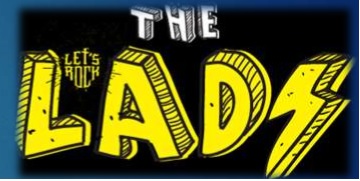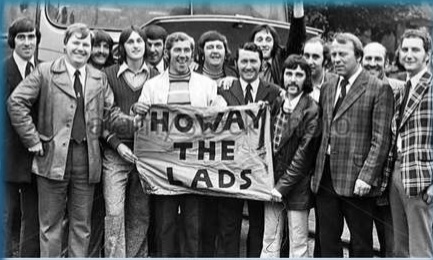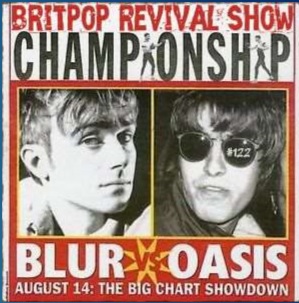Concept Investigation: Lad
by Martina Andrenacci
What does it mean?
LAD noun [ C ] UK /læd/ US /læd/
Merriam-Webster Dictionary 1 : a male person of any age between early boyhood and maturity : boy, youth 2 : fellow, chap
Word Reference 1. a boy or young man 2. INFORMAL a familiar form of address for any male 3. a lively or dashing man or youth (esp in the phrase a bit of a lad) 4. a young man whose behaviour is characteristic of male adolescents, esp in being rowdy, macho, or immature 5. BRIT a boy or man who looks after horses
Cambridge Dictionary - a boy or young man: A group of young lads were standing outside the shop. The prime minister's a local lad (= he was born and lived in this area).
-lads and lasses (= boys and girls) Come on, lads, let's get this job finished!
Idioms: a bit of a lad: UK INFORMAL a young man who has sex with a lot of different women.
the lads: UK INFORMAL used to refer to the group of men that a young man spends time withsocially, especially those who he drinks alcohol with or plays sportwith.

Word Origin and History for “lad”
c.1300, ladde "foot soldier," also "young male servant" (attested as a surname from late 12c.), possibly from a Scandinavian language (cf.Norwegian -ladd, in compounds for "young man"), but of obscure origin in any case. OED hazards a guess on Middle English ladde, plural of the past participle of lead (v.), thus "one who is led" (by a lord). Liberman derives it from Old Norse ladd "hose; woolen stocking." "The development must have been from 'stocking,' 'foolish youth' to 'youngster of inferior status‘ and (with an ameliorated meaning) to 'young fellow.‘" He adds, "Words for socks, stockings, and shoes seem to have been current as terms of abuse for and nicknames of fools." Meaning "boy, youth, young man" is from mid-15c. Scottish form laddie, a term of endearment, attested from 1540s.
From “lad” to “lad culture”
Urban Dictionary “lad culture” A term that originates from the media that describes the behaviour of young males in the student lifestyle.
WIKIPEDIA Lad culture (also laddish culture and laddism) is a British subculture initially associated with the Britpop movement. Arising in the early 1990s, the image of the "lad" – or "new lad" – was that of a generally middle class figure espousing attitudes typically attributed to the working classes. The subculture involves young men assuming an anti-intellectual position, shunning sensitivity in favour of drinking, violence, and sexism.

ORIGIN
The term was coined by journalist Sean O'Hagan in a 1993 article about a young, brash and boisterous economist called David "Lad Lad Lad" Sturrock in Arena.
Part of "the postmodern transformation of masculinity”, in 1990s 'new lad' was a clear reaction to the 'new man‘, most clearly embodied in current men's magazines, such as Maxim, FHM and Loaded, and marked by a return to hegemonic masculine values of sexism homosociality.
“Men saw themselves as battered by feminism"
It should be considered that "laddishness is a response to humiliation and indignity girlpower/ female triumphalism which echoes through the land".
Lad culture grew beyond men's magazines to movies such as Snatch and Lock, Stock and Two Smoking Barrels and to the TV sitcom Men Behaving Badly. Present images of laddishness that are dominated by the male pastimes of drinking, watching football, and sex. These are presented as being ironic , stating: "for men who should know better".
The American equivalent has been termed "'Frat Boy Nation”, a backlash against the sensitive, pro-feminist male of a very similar order.
At the time, when women were increasingly feeling that "new men are fine in the kitchen, but who wants them in the bedroom?“, the "new lad" image offered "a space of fun, consumption and sexual freedom for men", as well as "a refuge from the constraints and demands of marriage and nuclear family". “It is easier to be a lad rather than a new man in most workplaces”.
LAD CULTURE MUSIC
BRITPOP
Britpop is a UK based music and culture movement in the mid 1990s which emphasised "Britishness", and produced bright, catchy pop music, partly in reaction to the popularity of the darker lyrical themes of the US-led grunge music, an alternative rock genre, and to the UK's own shoegazing music scene. The most successful bands associated with the movement are Oasis, Blur, Suede and Pulp; those groups would come to be known as its "big four". The timespan of Britpop is generally considered to be 1993-1997, with 1994-1995, and a chart battle between Blur and Oasis dubbed "The Battle of Britpop", being the epicentre of activity. While music was the main focus, fashion, art, and politics also got involved, with artists such as Damien Hirst being involved in creating videos for Blur, and being labelled as Britart or Britpop artists, and Tony Blair and New Labour aligning themselves with the movement.

Britpop groups brought British alternative rock into the mainstream and formed the backbone of a larger British cultural movement called Cool Britannia. "The Battle of Britpop" brought Britpop to the forefront of the British press in 1995.
Britpop bands show elements from the British pop music of the Sixties, glam rock and punk rock of the Seventies, and indie pop of the Eighties in their music, attitude, and clothing. Specific influences: Blur and Oasis drew from the Kinks and the Beatles, the Stone Roses, Happy Mondays, Inspiral Carpets (for whom Oasis's Noel Gallagher had worked as a roadie during the Madchester years).
Local identity and regional British accents are common to Britpop groups, as well as references to British places and culture in lyrics and image. Stylistically, Britpop bands use catchy hooks and lyrics that were relevant to young British people of their own generation. Britpop bands conversely denounced grunge as irrelevant and having nothing to say about their lives.
The imagery associated with Britpop was equally British and working class. The Union Jack became a prominent symbol of the movement and its use as a symbol of pride and nationalism. The emphasis on British reference points made it difficult for the genre to achieve success in the US.
CRITICISM AND STUDIES
Lad culture has attracted criticism from feminist circles. For example, Germaine Greer critiques it in her 2000 book “The Whole Woman”, while Kira Cochrane asserts that "it's a dark world that Loaded and the lad culture has bequeathed us". Dr Joanne Knowles of Liverpool John Moores University wrote that the "lad" displays "a pre-feminist and racist attitude to women as both sex objects and creatures from another species".
A study by Gabrielle Ivinson of Cardiff University and Patricia Murphy of the Open University identified lad culture as a source of behavioural confusion and an investigation by Adrienne Katz linked it to suicide and depression. A study of the architecture profession found that lad culture had a negative impact on women completing their professional education. Commentator Helen Wilkinson believes that lad culture has affected politics and decreased the ability of women to participate.
The UK's largest student union warned in a 2015 study that universities were failing to address the issue of lad culture, with almost half (49%) of all universities having no policy against discrimination due to sexuality, or anti-sexual harassment policies.
FROM “LAD” TO “LADETTE”
The word "ladette" has been coined to describe young women who take part in laddish behaviour. It is defined by the Concise Oxford Dictionary as: "Young women who behave in a boisterously assertive or crude manner and engage in heavy drinking sessions.“
The term "lad" is also used in Australian youth culture, however it is used to refer to an underclass criminal subculture that is more similar to the “chav” or football casual subcultures, rather than the middle class student subculture (as in UK). Australian lads wear a distinctive dress code, consisting of running caps and shoes combined with striped polo shirts and sports shorts. They frequently use phrases in conversation like "Ad-lay" to refer to a fellow "Lad". Lad-rap is a growing underground hip hop scene in Australia.
A Shropshire Lad 1: From Clee to heaven the beacon burns
BY A. E. HOUSMAN
From Clee to heaven the beacon burns,
The shires have seen it plain,
From north and south the sign returns
And beacons burn again.
Look left, look right, the hills are bright,
The dales are light between,
Because 'tis fifty years to-night
That God has saved the Queen.
Now, when the flame they watch not towers
About the soil they trod, Lads, we ’ll remember friends of ours
Who shared the work with God.
To skies that knit their heartstrings right,
To fields that bred them brave,
The saviours come not home tonight
Themselves they could not save.
It dawns in Asia, tombstones show
And Shropshire names are read;
And the Nile spills his overflow
Beside the Severn’s dead.
We pledge in peace by farm and town
The Queen they served in war,
And fire the beacons up and down
The land they perished for.
‘God save the Queen’ we living sing,
From height to height ’tis heard;
And with the rest your voices ring,
Lads of the Fifty-third.
Oh, God will save her, fear you not:
Be you the men you ’ve been,
Get you the sons your fathers got,
And God will save the Queen.
Lad : A Yorkshire Story (2013)

Storyline A teenage boy forms a friendship with a park ranger in the Yorkshire Dales after the death of his father.
Taglines: From the heart of a boy comes the story of a man Genres: Drama
Director: Dan Hartley Writer: Dan Hartley Stars: Nancy Clarkson, Mario Demetriou, Oliver Exley
